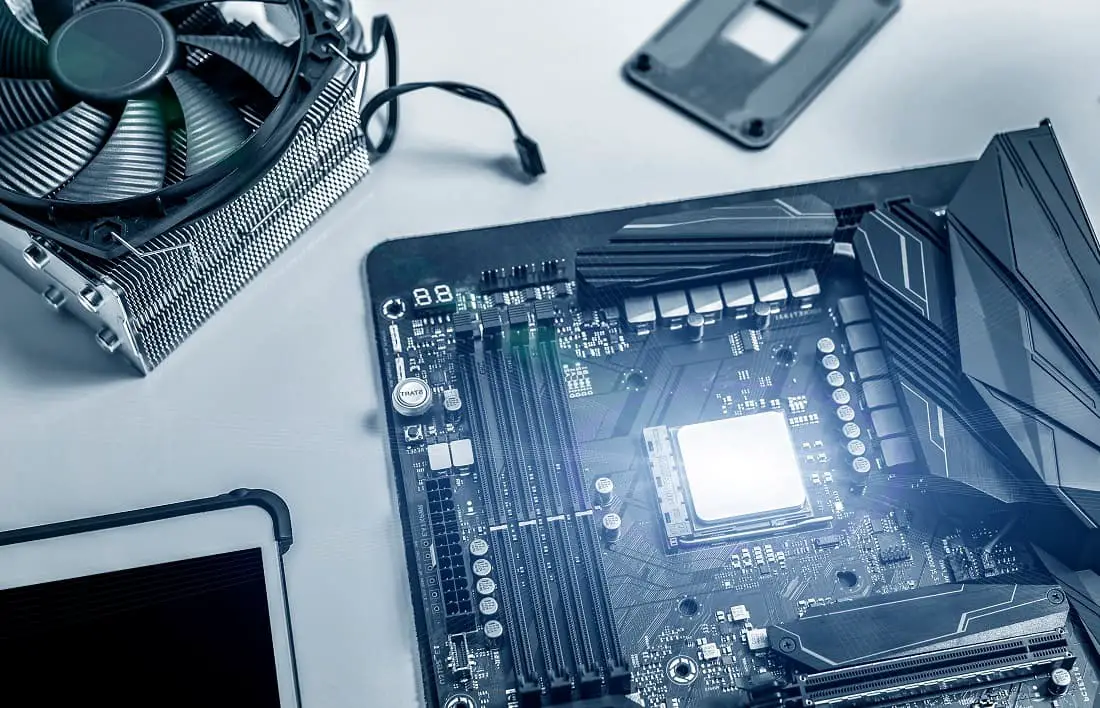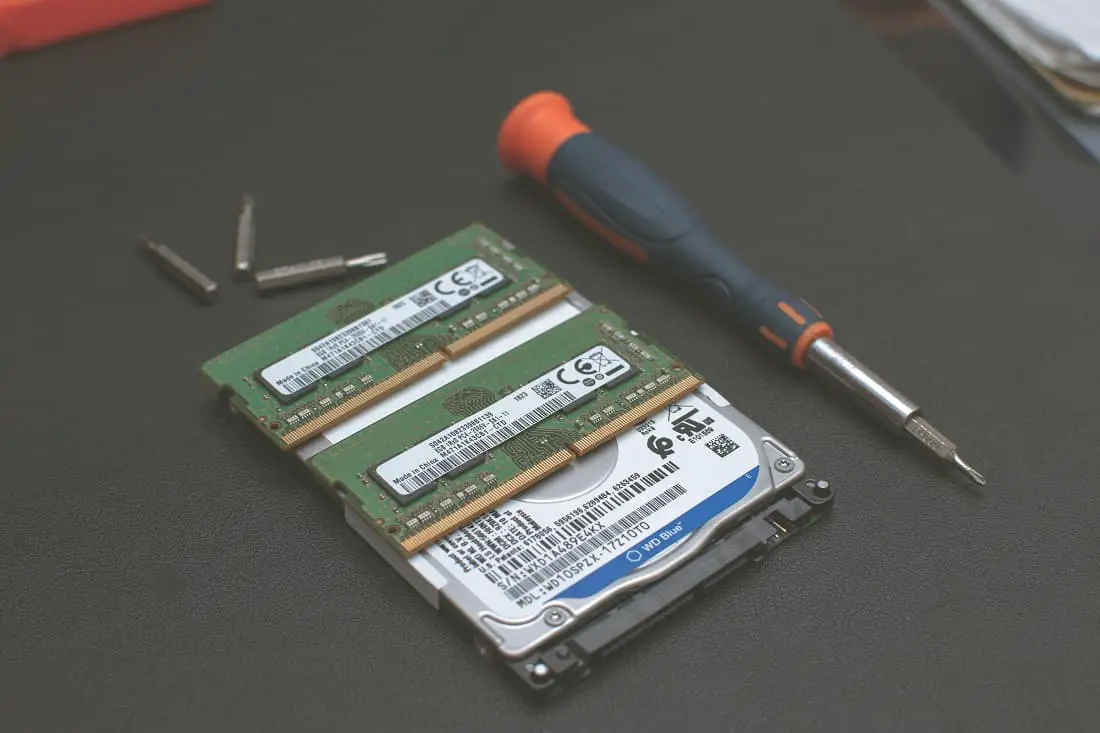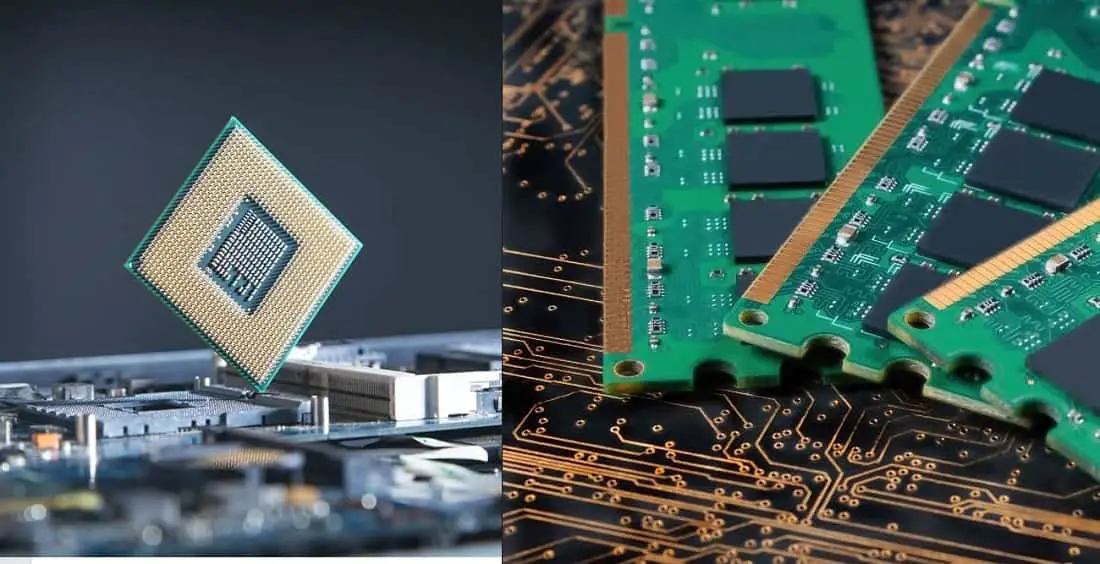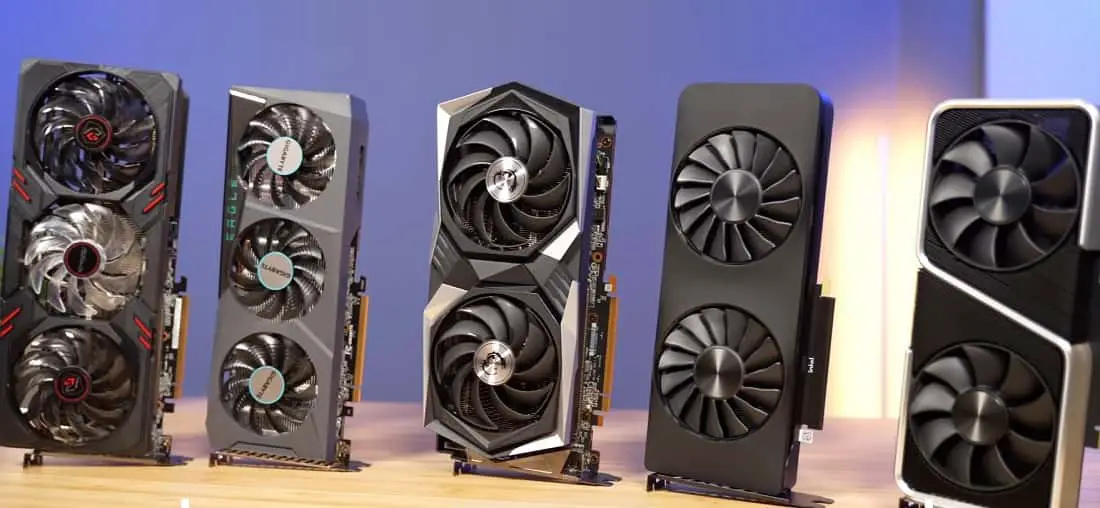RAM stands for Random Access Memory its a hardware device generally located motherboard of a computer or laptop. It is the primary memory on your computer and also called volatile memory that temporarily stores the files you are working on, and everything is erased when you shut down or restart your computer. There are mainly two types of RAM one is SRAM (static Random Access Memory) and the second one is DRAM (Dynamic Random Access Memory). Both SRAM and DRAM have their own advantages and disadvantages compared to the other. Let’s find out how an SRAM is different from a DRAM.
Contents
Difference between SRAM and DRAM
Static RAM and dynamic RAM both are different from each other in many contexts like speed, capacity, etc. These differences occur due to the difference in the technique which is used to hold data. DRAM makes use of a single transistor and capacitor for each memory cell, whereas each memory cell of SRAM makes use of an array of 6 transistors. DRAM needs refreshing, whereas SRAM does not require refreshing the memory cell.
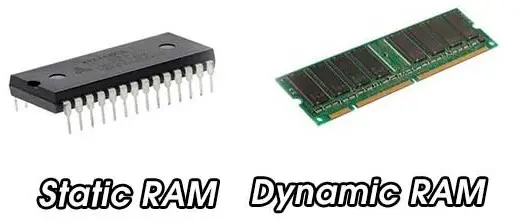
SRAM vs dram comparison chart
| Dynamic RAM | Static RAM | |
|---|---|---|
| Introduction | Dynamic random-access memory is a type of random-access memory that stores each bit of data in a separate capacitor within an integrated circuit. | Static random-access memory is a type of semiconductor memory that uses bistable latching circuitry to store each bit. The term static differentiates it from dynamic RAM (DRAM) which must be periodically refreshed. |
| Typical applications | Main memory in a computer (e.g. DDR3). Not for long-term storage. | L2 and L3 cache in a CPU |
| Typical sizes | 2GB to 4GB in smartphones and tablets; 4GB to 16GB in computers or laptops | 1MB to 16MB |
| Place Where Present | Present on the motherboard. | Present on Processors or between Processor and Main Memory. |
What is DRAM (Dynamic Random Access Memory)?
DRAM stands for dynamic random access memory.
- Use capacitors to store data.
- Consume more power than SRAMs.
- Usually used as the main memory.
- Need to refresh in order to retain the data stored.
- Slow compared to SRAMs.
- Have a short data lifetime.
- Cheap to manufacture.
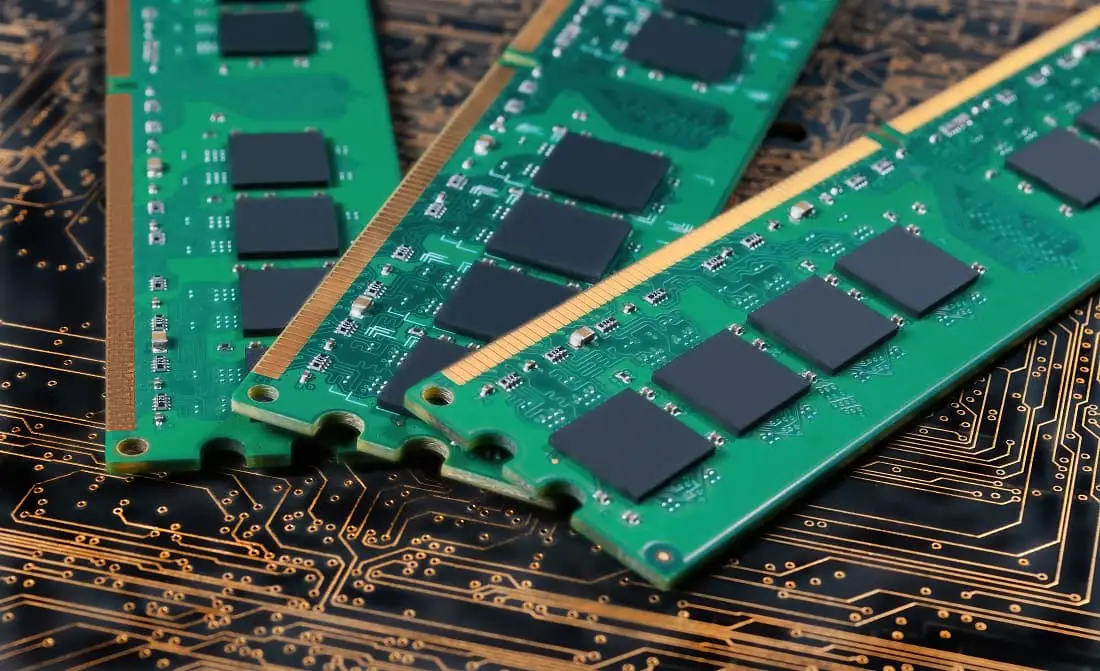
Its widely used as the main memory for a computer system. DRAM takes 1 transistor and 1 capacitor to store 1 bit. This means Each memory cell in a DRAM chip holds one bit of data and is composed of a transistor and a capacitor. The transistor functions as a switch that allows the control circuitry on the memory chip to read the capacitor or change its state, while the capacitor is responsible for holding the bit of data in the form of a 1 or 0.
Inside a dynamic RAM chip, each memory cell holds one bit of information and is made up of two parts: a transistor and a capacitor.
As we know a capacitor is like a container that stores electrons. When this container is full, it designates a 1, while a container empty of electrons designates a 0. However, capacitors have a leakage that causes them to lose this charge, and as a result, the “container” becomes empty after just a few milliseconds. And in order to DRAM chip to work, the CPU or memory controller must recharge the capacitors that are filled with electrons (and therefore indicate a 1) before they discharge in order to retain the data. To do this, the memory controller reads the data and then rewrites it. This is called refreshing and occurs thousands of times per second in a DRAM chip. Because of the need to constantly refresh data, which takes time, DRAM is slower.
The most common application of DRAM such as DDR3 is volatile storage for computers. While not as fast as SRAM, DRAM is still very fast and can connect directly to the CPU bus. Typical sizes of DRAM are about 2 to 4GB in smartphones and tablets, and 4 to 16GB in laptops or computers.
What is SRAM (static random access memory)?
SRAM stands for static random access memory.
- Use transistors to store data.
- Consume less power than DRAMs.
- Have a small cycle length
- Usually used as cache memory.
- Significantly faster than DRAMs.
- Occupy more space than DRAMs.
- Expensive to manufacture
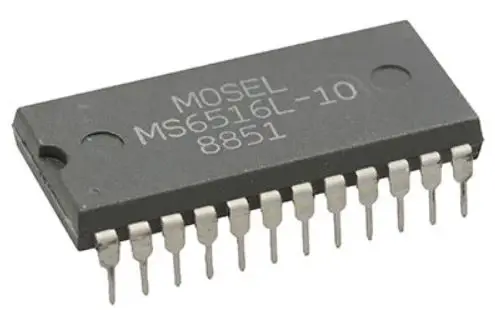
It is normally used to build very fast memory known as cache memory. SRAM takes 6 transistors to store 1 bit and it’s much faster compared to DRAM. Static RAM uses a completely different technology compared to DRAM. In static RAM, a form of flip-flop holds each bit of memory. A flip-flop for a memory cell takes 4 or 6 transistors along with some wiring but never has to be refreshed. This makes static RAM significantly faster than dynamic RAM. Unlike dynamic RAM (DRAM), which stores bits in cells consisting of a capacitor and a transistor, SRAM does not have to be periodically refreshed.
SRAM uses several transistors in a cross-coupled flip-flop configuration and does not have the leakage issue and does not need to be refreshed.
However, because it has more parts, a static memory cell takes up a lot more space on a chip than a dynamic memory cell. Therefore you get less memory per chip, and that makes static RAM a lot more expensive.
It’s more Faster: Because SRAM does not need to refresh, it is typically faster. The average access time of DRAM is about 60 nanoseconds, while SRAM can give access times as low as 10 nanoseconds.
The most common application of SRAM is to serve as a cache for the processor (CPU). In processor specifications, this is listed as L2 cache or L3 cache. SRAM performance is really fast but SRAM is expensive, so typical values of L2 and L3 cache are 1MB to 8MB.
Static RAM vs Dynamic RAM
The key difference between the two is the technology that is used for holding data. Due to this key difference, other differences arise too. SRAM makes use of latches in order to store data (transistor circuit), whereas DRAM uses capacitors for storing bits in the form of charge. SRAM uses normal high-speed CMOS technology for the construction, whereas DRAM uses Special DRAM processes for achieving optimized high density. Dynamic RAMs have a simple internal structure in comparison to SRAMs.
- SRAM uses Transistors to store information while DRAM use capacitors to store data.
- SRAM has a lower access time therefore it’s faster compared to DRAM, while DRAM has a higher access time that’s why it’s slower than SRAM.
- SRAM is used in cache memory while DRAM is used in Main Memory
- SRAM is less cost-effective and more expensive them DRAM while DRAM is comparatively less costly. (DRAM is cheaper compared to SRAM)
- SRAM uses Transistors, no capacitors are used hence no refreshing is required, while DRAM use capacitors and to store information for longer time contents of the capacitor need to be refreshed periodically.
- SRAM are low-density devices where DRAM are high-Density devices.
- SRAM structure is more complex than DRAM, while DRAM structures are simpler than SRAM.
- SRAM requires a constant power supply means this type of memory consumes more power while DRAM offers reduced power consumption due to the fact that the information is stored in the capacitor.
- The storage capacity of SRAM is smaller than DRAM, whereas the storage capacity of DRAM is comparatively larger.
SRAM vs dram speed
SRAM is typically faster than DRAM since it doesn’t have refresh cycles. The average access time of DRAM is about 60 nanoseconds, while SRAM can give access times as low as 10 nanoseconds.
Since each SRAM memory cell is comprised of 6 Transistors unlike a DRAM memory cell, which is comprised of 1 Transistor and 1 Capacitor, the cost per memory cell is far greater in an SRAM compared to a DRAM.
conclusion
In SRAM, the data is stored in transistors, In DRAM, the data is stored in capacitors. SRAMs are used in cache memory, while DRAMs are used in main memory. DRAM requires a single capacitor and a transistor for each memory cell, whereas SRAM, uses six transistors for each memory cell. Due to the use of capacitors, DRAM requires to be refreshed periodically. DRAMs are less expensive and slower than SRAMs.
FAQ:
Which RAM is better SRAM or DRAM?
SRAM outperforms DRAM in terms of speed and cost. DRAM provides more storage capacity than SRAM. Cache memory uses SRAMs, whereas main memory uses DRAMs.
Static ram and dynamic ram example
DRAM is used for the large main memory of personal computers, workstations, etc. SRAM is used for the smaller and faster cache memory.
The disadvantage of dynamic RAM over static RAM is?
The disadvantage of dynamic RAM over static RAM is need to refresh the capacitor charge every once in two milliseconds.
SRAM vs DRAM which is faster?
SRAM is comparatively faster than DRAM.
what is the major difference between SRAM and DRAM
SRAM is used for cache memory while DRAM is used for main memory
What is SDRAM?
SDRAM stands for Synchronous Dynamic Random Access Memory, a type of DRAM that is synchronized with the processor system bus for a speed advantage.
Why is RAM called volatile memory?
RAM store working data until the PC is running and loses its content when the power is turned off. This means it temporarily stores data until power is on that’s why it’s called volatile memory. Both SRAMs and DRAMs are volatile memories,
Also Read
- 10 Tips to Free Up RAM on Your Windows 10 Computer (Updated)
- SSD vs HDD Speed and Performance Comparison
- What is the Difference Between 32-Bit and 64-Bit Windows 10 and Processor
- Compare Intel core i3 vs i5 vs i7 processors Which One Should You Buy?
- What Is The Difference Between A VPN And A Proxy and how they work?
- What is the Difference Between IPv4 and IPv6 Protocols? Explained 2019


